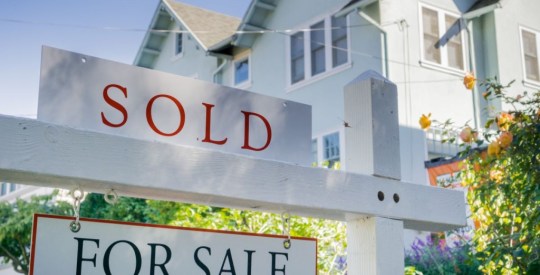Oh, to be 50 again. Recently I celebrated the big one—not 50 or 60, but 63, one year over the magical qualification age for a reverse mortgage. I guess I am luckier than many at 63. I have a job that I love, a great family, good health and, of course, grandkids. (I learned why we have children: so that we can have grandchildren.)
But some of our seniors are not so lucky. They don’t have a job, Social Security is inadequate to pay basic expenses, and many don’t have extended families that can support them. So what do they have? Hopefully, they have retirement plans, savings accounts and equity in their homes to help them weather their financial future as seniors.
Over the years, things have changed from my point of view. When I started in the mortgage business, the mantra for my generation was to borrow as much as could, as cheap as you could, for as long as you could. The bottom line is that the actual dollar equity in a boomer’s home may still be larger due to inflation over time, but it also may be a much smaller percentage of what their parents had in actual home equity. With the dramatic decline of property values in the past five to seven years, home equity overall has decreased. This has left some seniors without enough home equity to qualify for a reverse mortgage, and has also resulted in an increase in mortgage risk and losses for our existing reverse mortgage programs.
It is indeed a shame that a program that has been around for 24 years has been so maligned in recent months. During this year, reverse mortgage loan plans have been dropped or will be changed so dramatically that some seniors will be unable to retain the last bastions of self-respect: homeownership and the ability to live the remainder of their lives with dignity in their homes. But there are still thousands of seniors who still qualify for a reverse mortgage, and for that we as an industry and as caring humans should be grateful.
Let’s talk about the typical reverse mortgage borrower today. It should be no secret that the average borrower since the inception of the program has been female, and it’s probably also not a shock that the average age for new borrowers over the last two years has been 72. Current life expectancy tables are now projecting a much longer lifetime for reverse mortgage borrowers than was projected when they originated their mortgage loans. Here are some more facts from AARP, NCOA and various news outlets that illustrate just how much has changed for America’s seniors in the past three decades:
-In 1985, 18 percent of the U.S. the workforce comprised workers age 65 to 69. In 2010, this number jumped to 32 percent.
-In 2012, unemployed seniors age 55 to 64 were out of work twice as long as those unemployed in the 25 to 34 age bracket.
-About 44 percent of reverse mortgage borrowers have income under 200 percent of the federal poverty level.
-A recent survey reported that 41 percent of participating seniors said they relied solely on Social Security for income.
-Industry sources have revealed that the primary reasons that seniors consider reverse mortgages are: To pay off existing mortgages To supplement income To plan ahead for emergencies To pay for home repairs and improvements
-About 53 percent of U.S. seniors 65 and older have email accounts and use the Internet, and 25 percent send text messages and participate in social media.
Obviously, these facts will impact the program and we need to be prepared to adjust so that it can meet the needs of senior borrowers in the future.
A number of years ago I had the opportunity to meet and spend quality time at an airport with Paul Harvey, one of the greatest radio commentators of all time. I had listened to him for years and was always mesmerized by what he said. As I listened to his radio show, I often thought, “I wish I had said that” or “I wish I had thought of that.” I had great respect for him because he always spoke his mind. I am too old not to do so myself, so I plan to do so as my friend Paul Harvey did and speak my mind about the things that matter to me, like the reverse mortgage program.
In future articles, I intend to explore what I believe are new and creative ideas about how we can be better reverse mortgage professionals, not just for the benefit of today’s seniors, but for future seniors as well. Ideas apply only to a moment in time, but our actions can impact an eternity. Maybe if we institute some positive actions like these, we will be remembered as a generation of reverse mortgage providers who made a difference.



